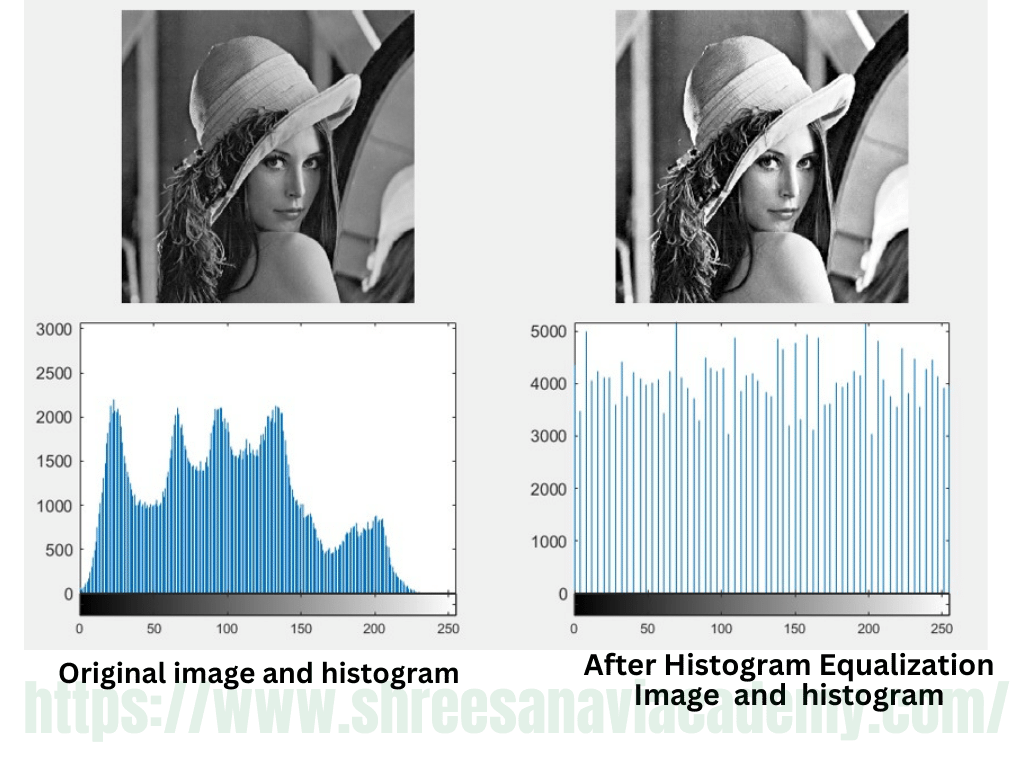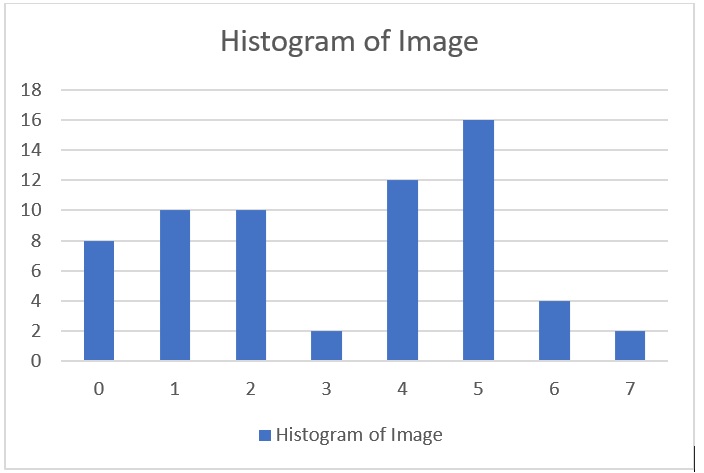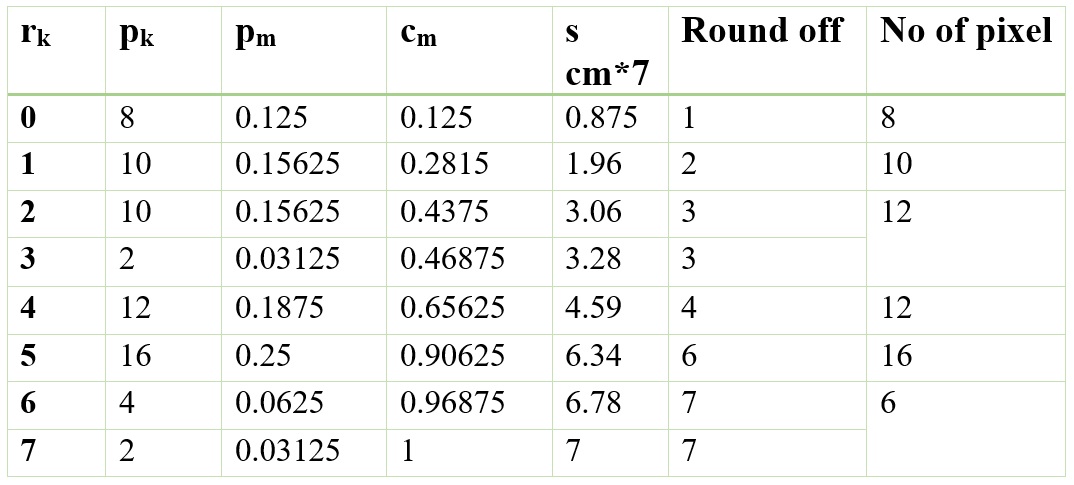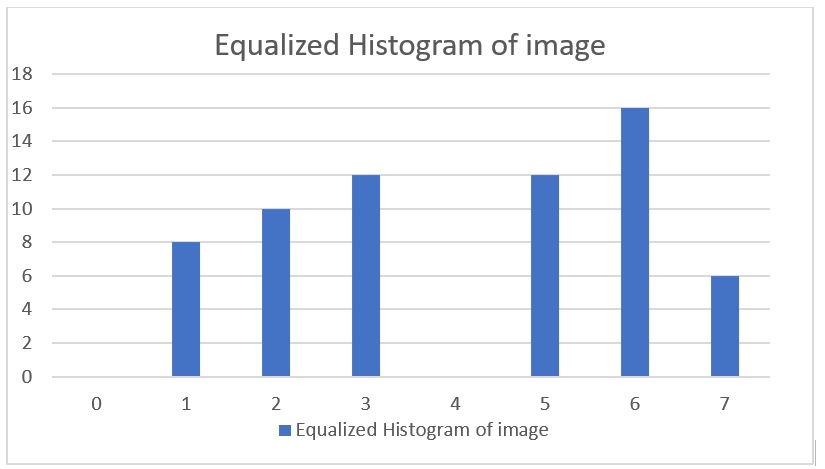Histogram Equalization
Histogram equalization is a computer image processing technique that improves image contrast. It achieves this by effectively spreading out the most frequent intensity values, thereby stretching out the image's intensity range. When the usable data in an image is represented by close contrast values, this method usually increases the global contrast. This allows areas with low local contrast to gain contrast.

The histogram indicates the number of times each gray scale value occurs. The normalized histogram is given by the histogram divided by the total number of pixels in the image, and it is an approximation to the Probability Mass Function.
The goal in histogram equalization is to approximate the gray scale-value distribution of an image to the uniform distribution. Histogram equalization is useful because it helps in spreading the gray scale values and allows us to see a larger range of gray scale values.
Example
Perform histogram equalization on the following 8X8 image the gray level distribution at the image is given below



